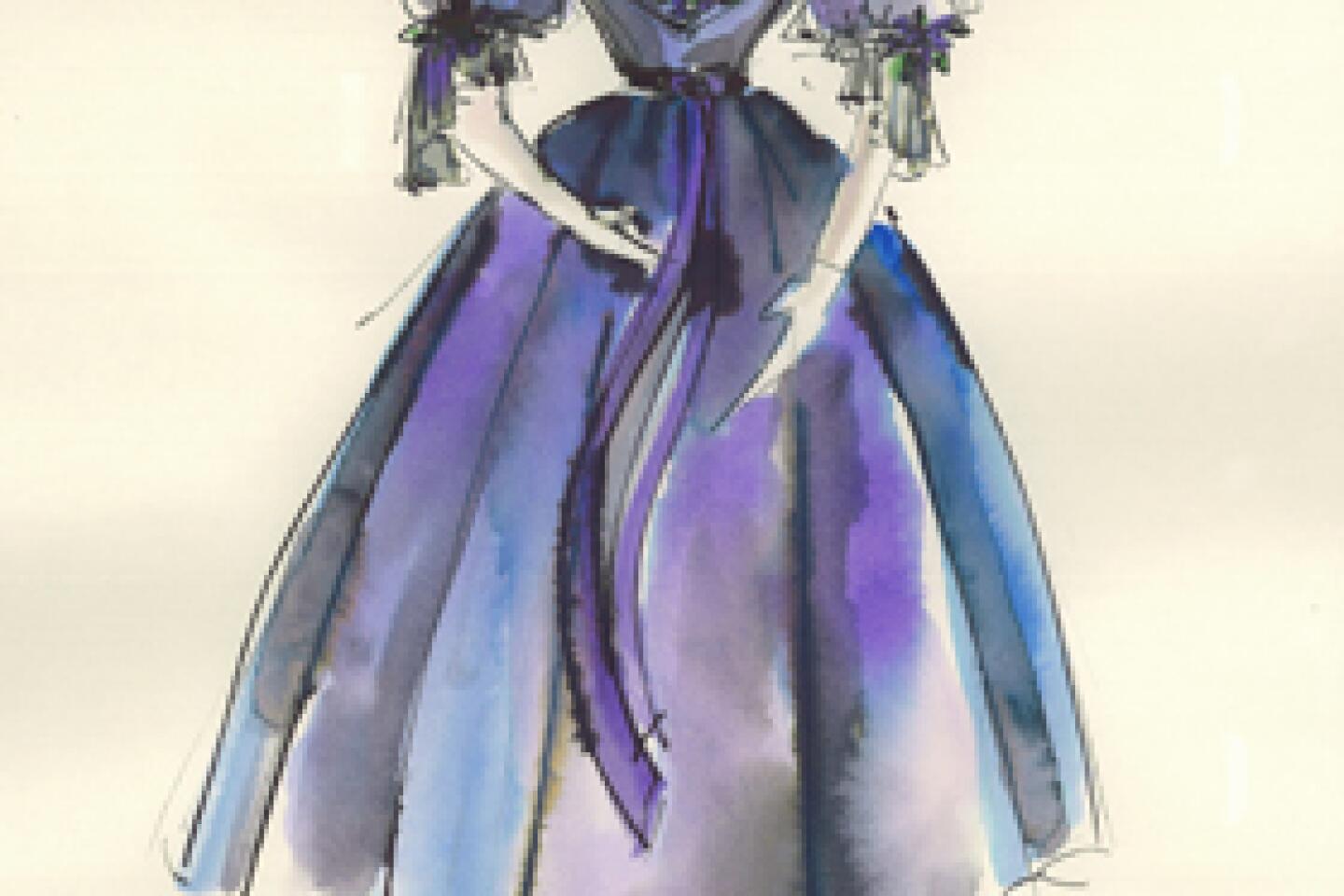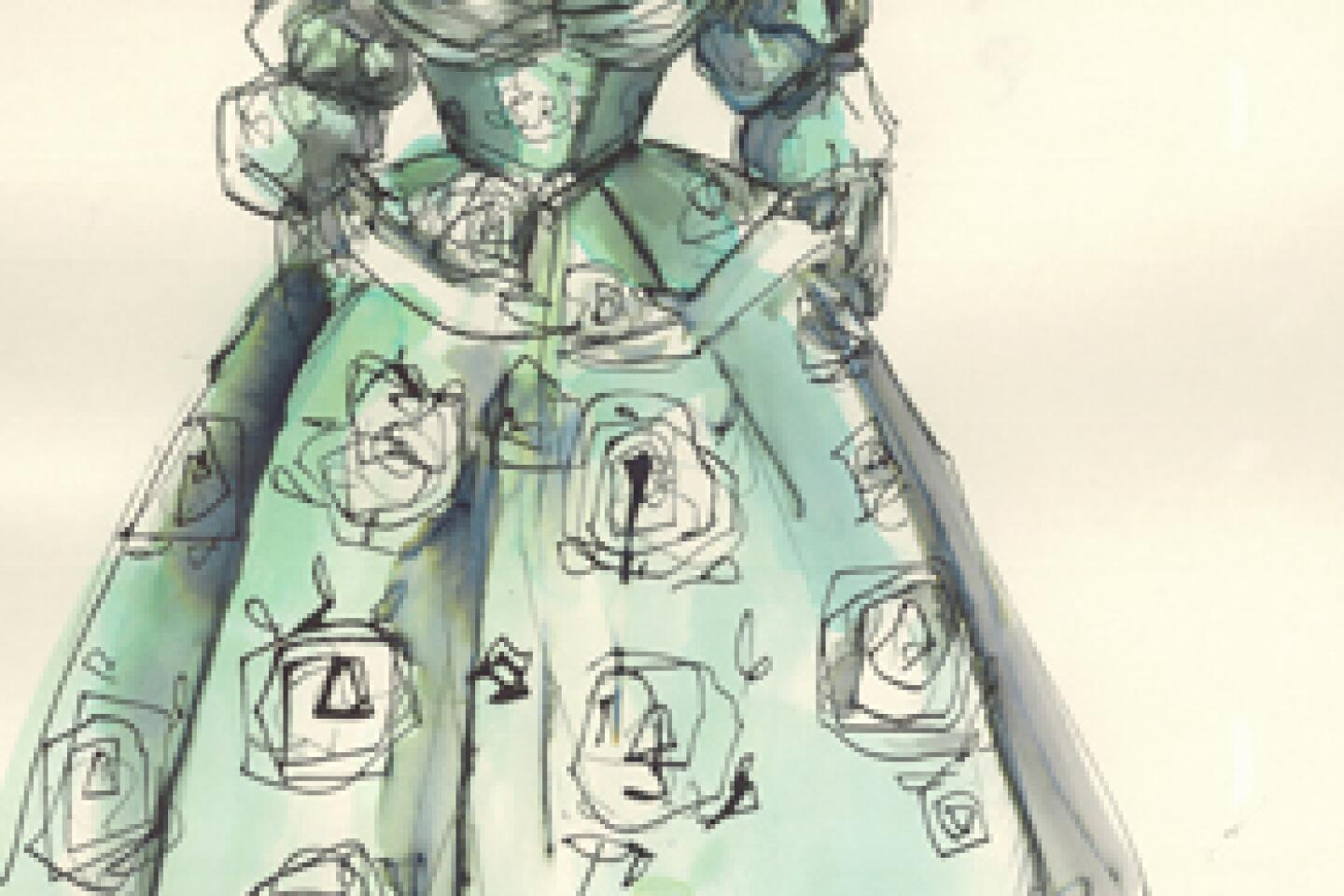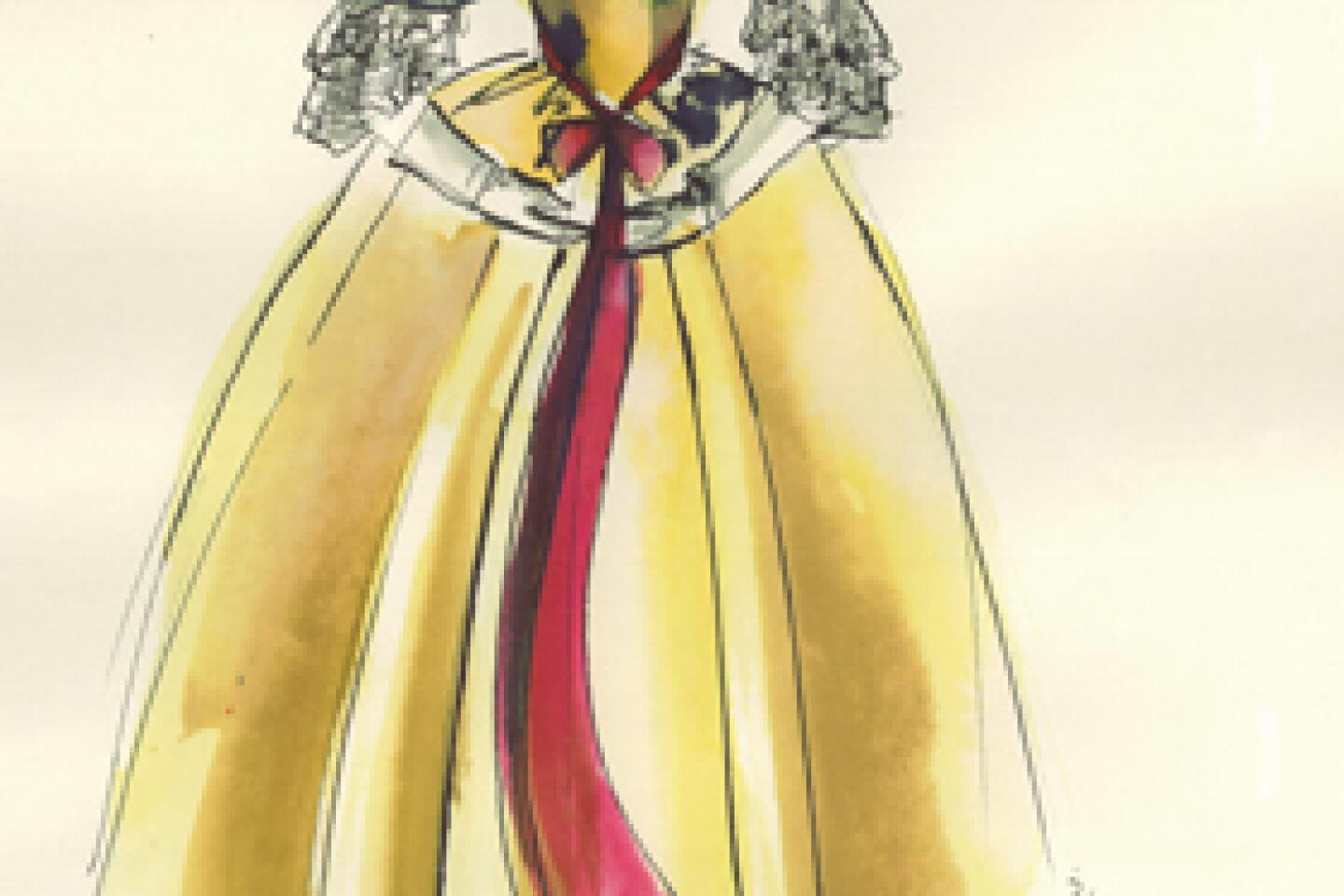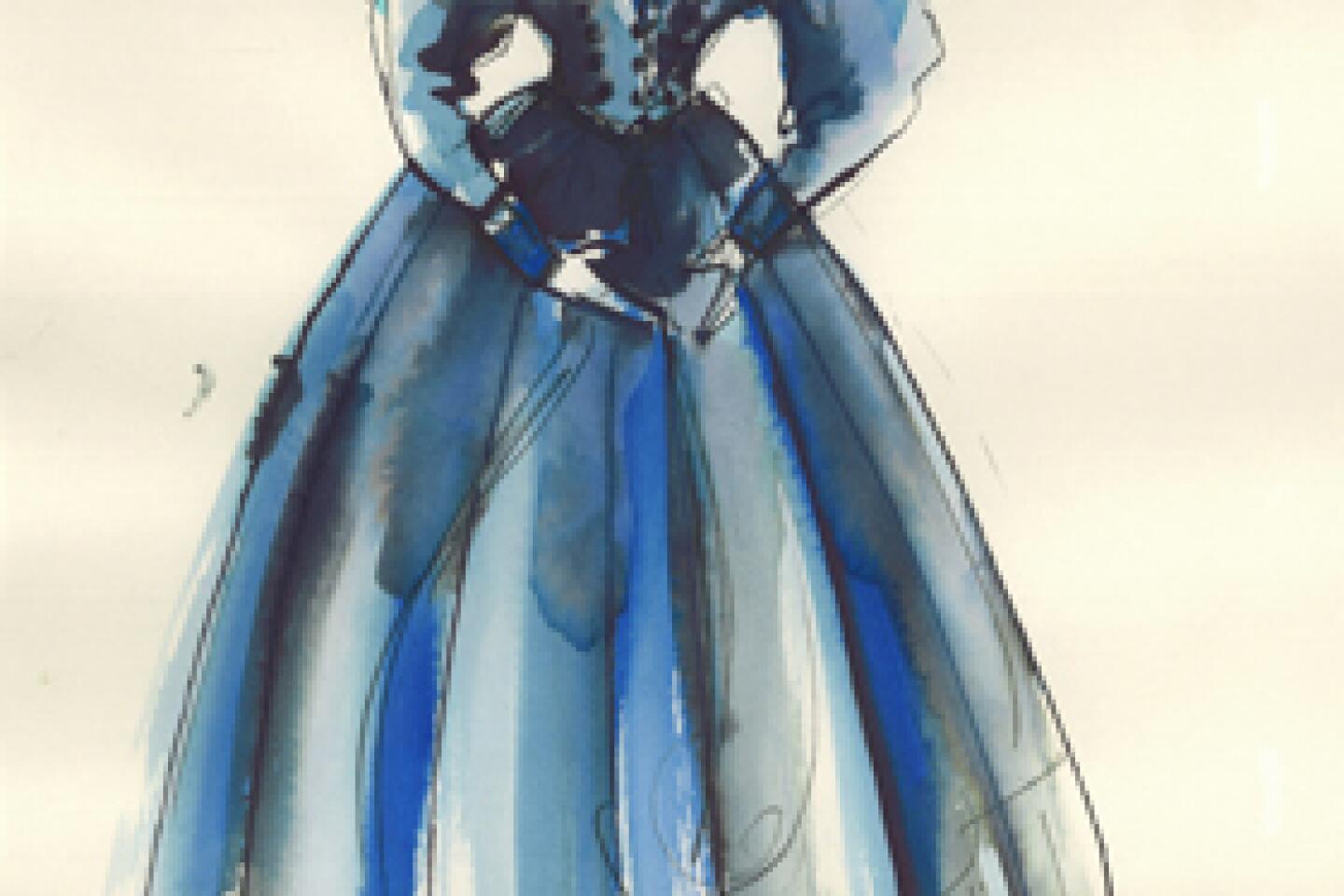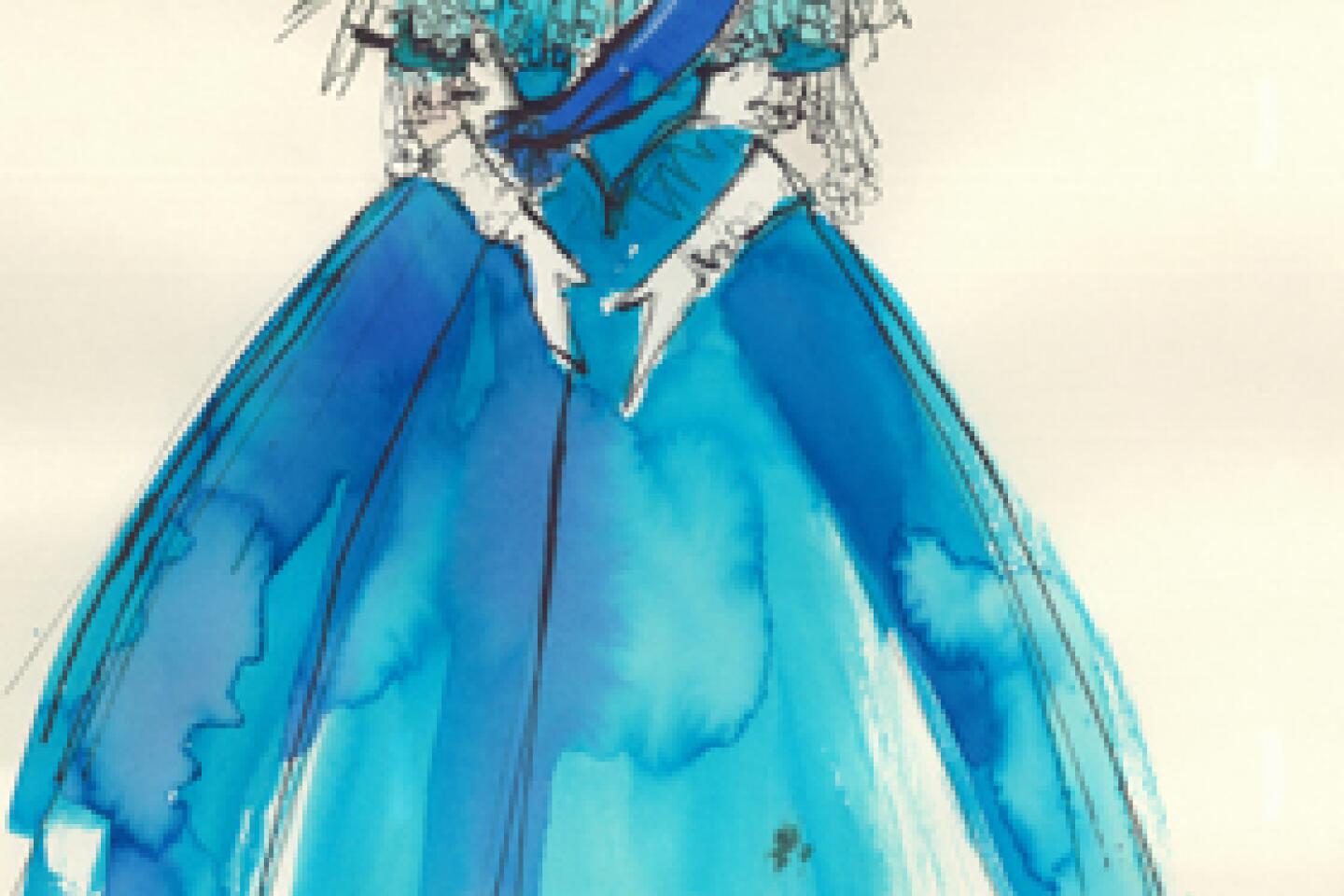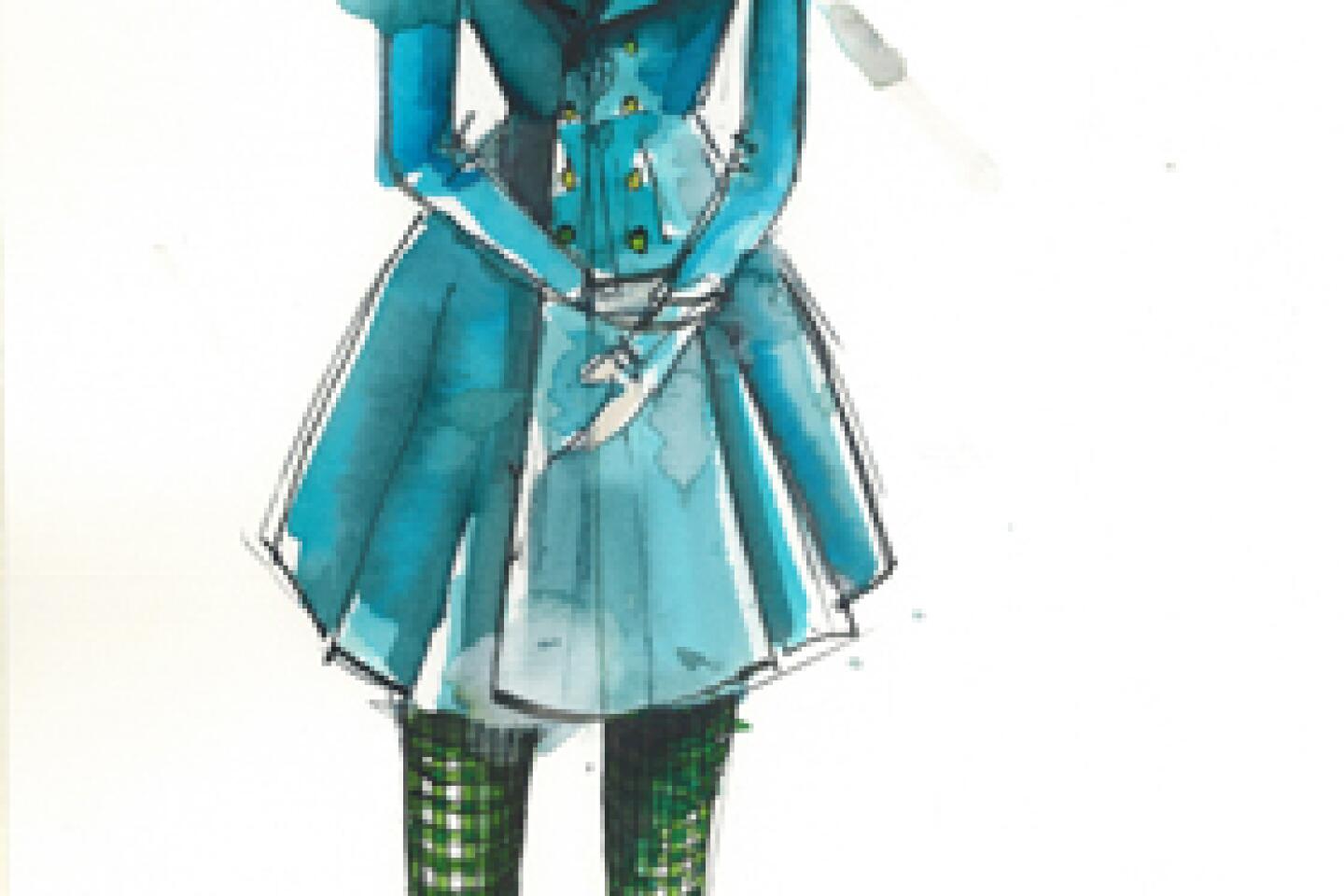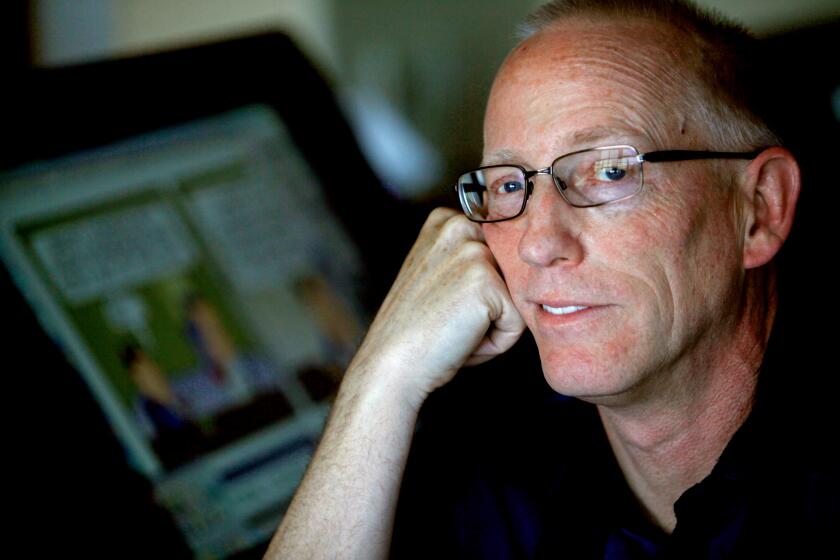The Contender: ‘The Young Victoria’ costume designer Sandy Powell
- Share via
Costume designer Sandy Powell netted her eighth Oscar nomination with her work on “The Young Victoria,” director Jean-Marc Vallee’s biopic of the early life of the iconic British monarch (played by Emily Blunt).
The honor is the latest in a celebrated career filled with such awards as Oscars for “Shakespeare in Love” (1998) and “The Aviator” (2004) and a British Academy of Film and Television Arts prize for Todd Haynes’ “Velvet Goldmine” (1998).
Powell launched her career with the help of director Derek Jarman (she rang him up after seeing “Jubilee” and “The Tempest”), and the two went on to partner on “Caravaggio” and “Edward II.” Her other collaborators include Martin Scorsese (“Gangs of New York,” ’The Departed” and “Shutter Island”) and Neil Jordan (“The Crying Game,” “The End of the Affair”).
Click here for photos of Sandy Powell’s “The Young Victoria” designs.
Busy with both the Oscar campaign derby and a slew of projects, including several for Scorsese, Powell nevertheless took time to explain the challenges of elegance on a budget and the importance of good undergarments.
Q: What sort of material did you consult in your research for “The Young Victoria”?
A: There are a lot of royal portraits of Victoria and the family, so obviously, we started with that. And written material, including her own diaries. She was very specific about her clothing and would describe in great detail what she was wearing and what she did that day, so that was very useful. And after that, I went to Kensington Palace, where there is a museum, and also some of her original pieces of clothing are archived there. We had access to look at those.
Q: What aspects of Victoria’s personality did you try to highlight through the costume design?
A: For the first half of the film, when she’s still the princess and living with her mother, who is very controlling, there’s not much of Victoria’s character that comes out through the clothing. She’s still being dressed by her mother (the duchess of Kent, played by Miranda Richardson), so what does come out is her rebellious nature. She was very headstrong and wanted to be more active, but the mother put her into dresses that were still very childlike. They were overly girlie and frilly and puffy, and Victoria fought against them. When she became queen, she could get rid of the control of her mother and make her own decisions. At that point, her costumes became more sophisticated and elegant, more streamlined.
Q: What was the greatest challenge you faced in the design for “Victoria”?
A: Creating as many things as we had to do within the time we had and the budget, but that’s usually the greatest challenge with most jobs. But actually, making something look royal and sumptuous and worth a lot of money, I suppose, because we obviously couldn’t use the same materials that were around in that period -- we couldn’t use real diamonds to decorate the dresses or even embroidery, because we didn’t have the time to do it, so we had to paint it and cheat a lot of it.
Q: I’m wondering how you were able to reconcile that need to make something look royal with the need for it to be easy to put on and take off for multiple days on a film shoot, because the fashion of the period looks fairly complicated.
A: With the women’s clothes, I don’t think that they are complex. I think they’re quite simple for this period. The most important thing is the undergarment. A woman will have a corset and petticoats on, and that creates the silhouette -- the base on top of which the dresses will go. The dresses themselves are very light. They’re made of fine fabrics-- silk, mostly -- and they just pop over the top of the underwear that’s already created your foundation. So in a way, once an actor has her underwear on, it becomes a question of putting another dress over it. Now, some actors are better at doing that than others -- some have been brought up in corsets, having done a lot of stage and period films. For them, it’s easy, and luckily, Emily [Blunt] was one of those people. There are other actors who are not so good [with these costumes], but again, fortunately, I had none of those [on “The Young Victoria”]. All of the actors were completely comfortable wearing period clothing.
Now, as far as the men are concerned, they’re wearing a pair of trousers, a shirt, a vest and a jacket, which isn’t a million miles away from what men have to wear to the office [today], except that things were a lot more tight-fitting for the men during this period. So I suppose that the difficulties come with the restrictions -- because things are tight-fitting, you have to maintain a very upright posture in order to carry it off. Contemporary people are used to wearing loose-fitting material in stretch fabrics, so for many it’s quite a shock to wear costumes such as these.
Q: Could you talk a bit about your working relationship with director Jean-Marc Vallee?
A: He had very clear ideas about how he wanted the film to feel. He had the look and the mood, and how life was for Victoria living in Kensington Palace while she was the princess, and how frustrating it was for her. He wanted it to be dark and gloomy and rather depressing and oppressive. So that was a sort of brief for lighting and production and myself and hair and makeup. And then as she became queen, everything lightened up and became a nicer environment. He was also instrumental in wanting her to look younger for the first half, so in that sense there was a collaboration. But after that, I wouldn’t really go to him with a drawing of every single costume, because invariably the costume evolves through the fittings. So once I knew in what direction a costume was heading, I would show him pictures of the fittings so there wasn’t a surprise on that day [of shooting].
Q: This is your eighth Oscar nomination. Does the recognition still have the same impact?
A: It feels just as exciting as it did the first time. It’s the same as someone who’s had six children -- they’re probably just as thrilled with the sixth one as they are with their first. Obviously, the first time is incredible, and actually terrifying. The only difference now is that it doesn’t terrify me. I still get nervous -- everyone gets nervous when you’re in that building on the night of the ceremony. The tension in the air is incredible. But I’m not terrified.
Q: Do you have your outfit picked out for the award ceremony?
A: Kind of [laughs]. I’m fluctuating between two and I can’t decide on which one.
More to Read
The biggest entertainment stories
Get our big stories about Hollywood, film, television, music, arts, culture and more right in your inbox as soon as they publish.
You may occasionally receive promotional content from the Los Angeles Times.
